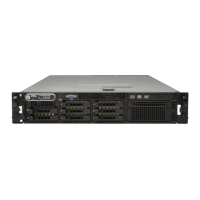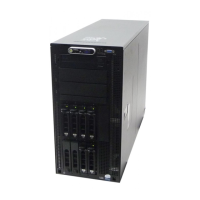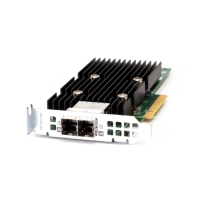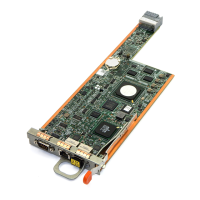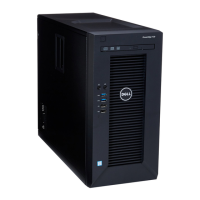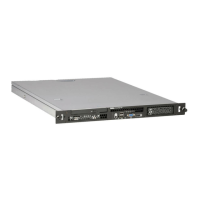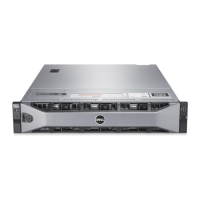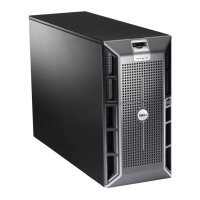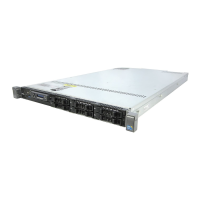Troubleshooting Your System 117
3
Remove all expansion cards installed in the system. See "Removing an Expansion Card" on page 78.
4
Let the system dry thoroughly for at least 24 hours.
5
Close the system. See "Opening and Closing the System" on page 54.
6
Reconnect the system to the electrical outlet, and turn on the system and attached peripherals.
If the system does not start properly, see "Getting Help" on page 147.
7
If the system starts properly, shut down the system and reinstall all of the expansion cards that you
removed. See "Installing an Expansion Card" on page 76.
8
Run the appropriate online diagnostic test. See "Using Server Administrator Diagnostics" on page 131.
If the tests fail, see "Getting Help" on page 147.
Troubleshooting a Damaged System
Problem
• System was dropped or damaged.
Action
CAUTION: Only trained service technicians are authorized to remove the system cover and access any of the
components inside the system. Before performing any procedure, see your Product Information Guide for
complete information about safety precautions, working inside the computer and protecting against electrostatic
discharge.
1
Open the system. See "Opening and Closing the System" on page 54.
2
Ensure that the following components are properly installed:
• Expansion cards and risers
• Power supplies
•Fans
• Processors and heat sinks
• Memory modules
• Drive-carrier connections to the SAS backplane board, if applicable
3
Ensure that all cables are properly connected.
4
Close the system. See "Opening and Closing the System" on page 54.
5
Run the system board tests in the system diagnostics. See "Running the System Diagnostics" on
page 132.
If the tests fail, see "Getting Help" on page 147.
Book.book Page 117 Friday, February 3, 2006 11:09 AM
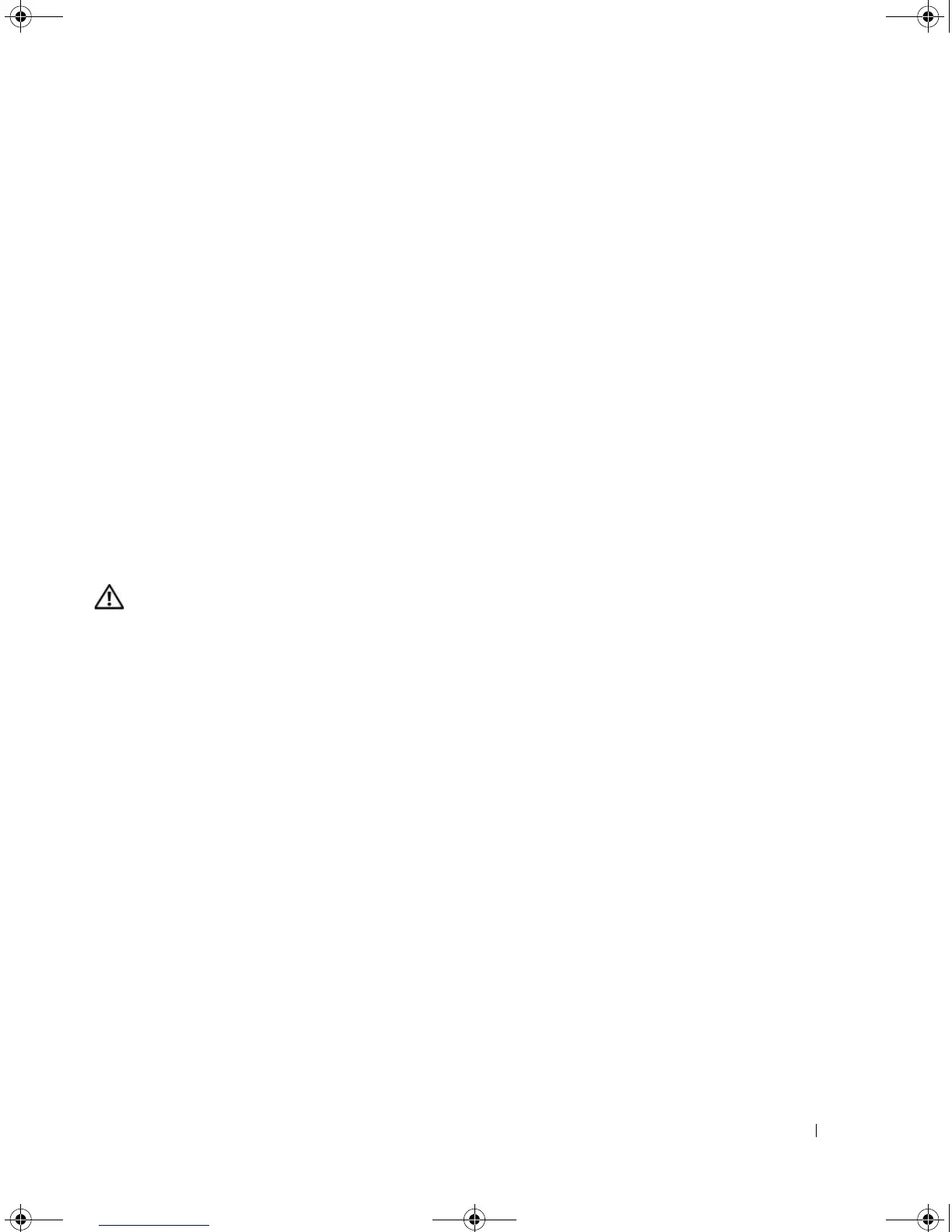